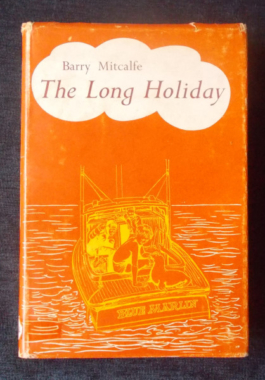- Sorry, this product is unavailable.
-
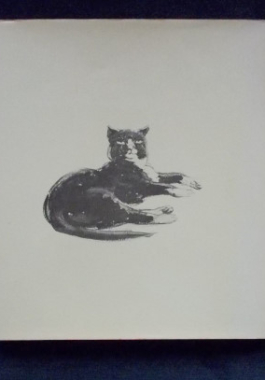
 Norman Lindsay kept a small warm corner of his long artistic life for his cats. He not only collected them and kept a horde of them in the stables and sheds, the gardens, bush and architectural nooks of Springwood - allowing the occasional prince to share the master's studio - but he drew them with humour and delightful observation. While The Magic Pudding made Lindsay's kookaburras famous, this other small anabranch of his art meandered own without public scrutiny amid the controversy, furor and celebration of his paintings and pen drawings. Some of the collection presented here were done with quick delight over the behaviour of one of his Springwood friends, others were drawn as cartoons for The Lone Hand or The Bulletin and others were done as Christmas cards or jokes. They all express the pleasure and delight his feline friends gave him. His long time friend, poet and author Douglas Stewart, introduces the drawings with an affectionate memoir of Lindsay and his cats.
Norman Lindsay kept a small warm corner of his long artistic life for his cats. He not only collected them and kept a horde of them in the stables and sheds, the gardens, bush and architectural nooks of Springwood - allowing the occasional prince to share the master's studio - but he drew them with humour and delightful observation. While The Magic Pudding made Lindsay's kookaburras famous, this other small anabranch of his art meandered own without public scrutiny amid the controversy, furor and celebration of his paintings and pen drawings. Some of the collection presented here were done with quick delight over the behaviour of one of his Springwood friends, others were drawn as cartoons for The Lone Hand or The Bulletin and others were done as Christmas cards or jokes. They all express the pleasure and delight his feline friends gave him. His long time friend, poet and author Douglas Stewart, introduces the drawings with an affectionate memoir of Lindsay and his cats. -
 Trying to be remarkable is painful whereas trying to be remembered is simply humiliating. The Sandman believes that in this, his second book, he has captured his fourth most humiliating experience to date. The Sandman (real name Steve Abbott), a noted radio host and comedian on Triple J Radio, is a master of ironic - often dubious - social adaptations. His methods for fitting in can be plausible and ridiculous at the same time and as a misfit with an overwhelming desire to please, can capture the essence of Australian beach culture.
Trying to be remarkable is painful whereas trying to be remembered is simply humiliating. The Sandman believes that in this, his second book, he has captured his fourth most humiliating experience to date. The Sandman (real name Steve Abbott), a noted radio host and comedian on Triple J Radio, is a master of ironic - often dubious - social adaptations. His methods for fitting in can be plausible and ridiculous at the same time and as a misfit with an overwhelming desire to please, can capture the essence of Australian beach culture. -
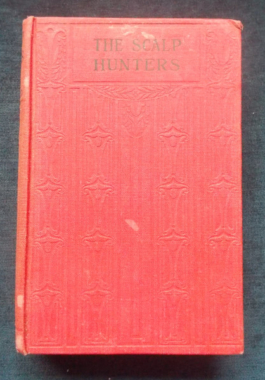 First published in 1851, this novel tells a large part of the early history of the differences between the eastern settlers and the American Indian and the clashes of difference between what it thought to be right or wrong at that time. Described as gritty and often brutal, it is the tale of Haller, who meets up with the mysterious Seguin after picking up with some prairie merchants. He instantly falls in love with Seguin's daughter Zoe. The innocent romance progresses to the point that he wishes to ask for her hand in marriage but Seguin will only permit it if Haller helps him to rescue his other daughter Adele from the Navajo Indians who abducted her when just a child. Not only are the Indians hostile - the adventurers must also battle the elements, hunger, thirst and wild animals.
First published in 1851, this novel tells a large part of the early history of the differences between the eastern settlers and the American Indian and the clashes of difference between what it thought to be right or wrong at that time. Described as gritty and often brutal, it is the tale of Haller, who meets up with the mysterious Seguin after picking up with some prairie merchants. He instantly falls in love with Seguin's daughter Zoe. The innocent romance progresses to the point that he wishes to ask for her hand in marriage but Seguin will only permit it if Haller helps him to rescue his other daughter Adele from the Navajo Indians who abducted her when just a child. Not only are the Indians hostile - the adventurers must also battle the elements, hunger, thirst and wild animals. -
 Realising he was on more than delicate ground and risking being caught between the choppers of the Machos and the Amazons , the irrepressible Ronald Searle felt it was more than time for a de-sexerciser - or at least, having a second look at some of the more sombre sexist crannies in the English language. The French don't seem to mind that la barbe (beard) is feminine; but in neuter English there are some anomalies crying out for correction. Is it logic that men should monopolise menopause ? Out of justice, womenpause must come. And so, Searle has corrected anomalies such as abandonment (abandonwoment) mandolin (womandolin) dismantle diswomantle - and more - complete with illustrations.
Realising he was on more than delicate ground and risking being caught between the choppers of the Machos and the Amazons , the irrepressible Ronald Searle felt it was more than time for a de-sexerciser - or at least, having a second look at some of the more sombre sexist crannies in the English language. The French don't seem to mind that la barbe (beard) is feminine; but in neuter English there are some anomalies crying out for correction. Is it logic that men should monopolise menopause ? Out of justice, womenpause must come. And so, Searle has corrected anomalies such as abandonment (abandonwoment) mandolin (womandolin) dismantle diswomantle - and more - complete with illustrations. -
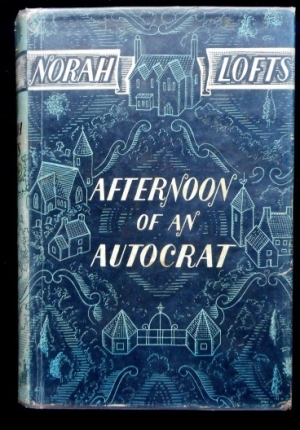 Sir Charles Augustus Shelmadine was an autocrat. He ruled his village with a firm but kindly hand - instructing his tenants on their crops, their children and their love affairs. And when he died and the new Squire came, the village stirred uneasily. For the new Squire had strange ideas - and even stranger friends - friends like Mr. Mundford who never seemed to grow any older and whose name was linked with the terrible Hell Fire Club. And Mr. Mundford was interested in too many things that should not have concerned him... like the ruins of the old Roman temple... and what happened in the village on All-Hallow's Night...and in the silent, amber-eyed young woman called Damask Greenaway.
Sir Charles Augustus Shelmadine was an autocrat. He ruled his village with a firm but kindly hand - instructing his tenants on their crops, their children and their love affairs. And when he died and the new Squire came, the village stirred uneasily. For the new Squire had strange ideas - and even stranger friends - friends like Mr. Mundford who never seemed to grow any older and whose name was linked with the terrible Hell Fire Club. And Mr. Mundford was interested in too many things that should not have concerned him... like the ruins of the old Roman temple... and what happened in the village on All-Hallow's Night...and in the silent, amber-eyed young woman called Damask Greenaway. -
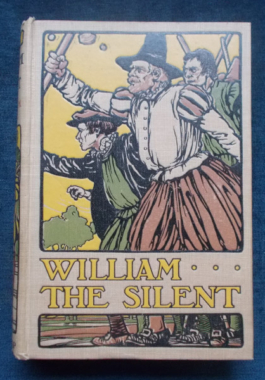 Into this quiet Old country castle on its rounded hill-top there came, one April day in the year 1533, a baby boy - quite an ordinary mite in every way. No one guessed then all that the helpless little one would do when he came to manhood, or that centuries after his death his name would be held in loving reverence by a nation living far from quiet Dillenburg. The story of William, eldest son of Count William of Nassau and the beginnings of the Protestant Church.
Into this quiet Old country castle on its rounded hill-top there came, one April day in the year 1533, a baby boy - quite an ordinary mite in every way. No one guessed then all that the helpless little one would do when he came to manhood, or that centuries after his death his name would be held in loving reverence by a nation living far from quiet Dillenburg. The story of William, eldest son of Count William of Nassau and the beginnings of the Protestant Church. -
 Welcome to the world of Art Handel, a world where the unexpected and expected often collide with the absolutely and totally unexpected and with little regard for each other. While it's sometimes nice to see how the other half live, this book gives you an insight into how the other half of that other half live. Described as 'dark and enlightening, horrific and hilarious...funny stuff emerges from the damndest places...like a clown with a razor blade...startling...original and darkly gleeful...think Stephen King on laughing gas...'
Welcome to the world of Art Handel, a world where the unexpected and expected often collide with the absolutely and totally unexpected and with little regard for each other. While it's sometimes nice to see how the other half live, this book gives you an insight into how the other half of that other half live. Described as 'dark and enlightening, horrific and hilarious...funny stuff emerges from the damndest places...like a clown with a razor blade...startling...original and darkly gleeful...think Stephen King on laughing gas...' -

 Set in an orphanage founded by an archbishop, the story opens on the No 14 bus trundling through London. The reader is given the background on most of the bus passengers - shadowy figures that play but a brief role - save one. A young woman who leaves the bus and disappears into the fog to the orphanage where she leaves a warmly wrapped baby on the doorstep. She kisses the child and leaves and all that is left is this new born child with a label attached to the shawl saying "Sweetie". And so Sweetie's life in St Mark's Orphanage begins. It is not a harsh, Dickensian place - the children are well cared for and it is run by Canon Mallow, sweet-natured, kind and slightly inept. He loves all the children but he is soon to retire and his place is taken by a new appointee, Dr Samuel Trump who is determined that St Mark's will be run efficiently - on proper lines - and he is appalled at the inefficiency and disorganisation he sees before him. Sweetie and Ginger, a real holy terror, strike up a friendship. Ginger is always up to all sorts of mischief and tricks who even manages to climb over the wall at night and go 'up West' on forays into the big wide world. He is the bane of Dr Trump's life as no amount of punishment or detentions seem to have any effect on him whatsoever and Sweetie, who has an adventurous streak in her as well, causes a lot of upset for the new Warden. https://cosmiccauldronbooks.com.au/p/london-belongs-to-me-norman-collins-2/
Set in an orphanage founded by an archbishop, the story opens on the No 14 bus trundling through London. The reader is given the background on most of the bus passengers - shadowy figures that play but a brief role - save one. A young woman who leaves the bus and disappears into the fog to the orphanage where she leaves a warmly wrapped baby on the doorstep. She kisses the child and leaves and all that is left is this new born child with a label attached to the shawl saying "Sweetie". And so Sweetie's life in St Mark's Orphanage begins. It is not a harsh, Dickensian place - the children are well cared for and it is run by Canon Mallow, sweet-natured, kind and slightly inept. He loves all the children but he is soon to retire and his place is taken by a new appointee, Dr Samuel Trump who is determined that St Mark's will be run efficiently - on proper lines - and he is appalled at the inefficiency and disorganisation he sees before him. Sweetie and Ginger, a real holy terror, strike up a friendship. Ginger is always up to all sorts of mischief and tricks who even manages to climb over the wall at night and go 'up West' on forays into the big wide world. He is the bane of Dr Trump's life as no amount of punishment or detentions seem to have any effect on him whatsoever and Sweetie, who has an adventurous streak in her as well, causes a lot of upset for the new Warden. https://cosmiccauldronbooks.com.au/p/london-belongs-to-me-norman-collins-2/ -
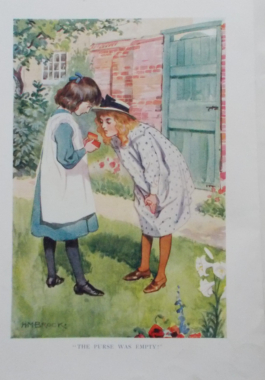

Blackie’s All-Story Book
$30.00In this volume for little ones, from a long, long time ago...Where The Rainbow Led To, Mrs Albert G. Latham; The Carol Singers, Violet Bradby; A Day's Outing, May Byron; Alfred Allgood And The Fairies, Aston Moore; Jill And Her Journey, May Byron; The Cricket Match, Jessie Pope; In The Enemy's Country, Mrs. Albert G. Latham; Jim, Alice Talwin Morris; The Lost Half-Crown, Mrs. Albert G. Latham; How To Play Croquet, Ann Marston; A Little Hero, May Byron; Betty's Plan, Gladys Davidson; Just Like Daddy, Mrs Albert G. Latham; How To Make The Best Of Things, Alice Talwin Morris; Billy The Boaster and The Mollycoddle, May Byron. With some colour and black and white illustrations done by H.M. Brock: https://en.wikipedia.org/wiki/H._M._Brock -
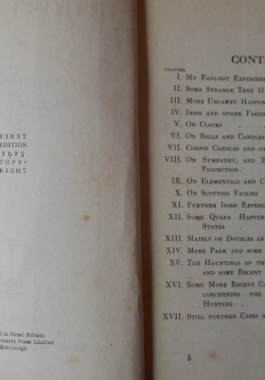
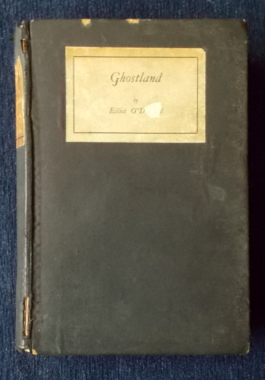
Ghostland: Elliot O’Donnell
$90.00Britain's most famous ghost hunter tells of his childhood experiences and encounters with ghosts , as well as touching on a wealth of other paranormal events: corpse candles, elementals, curses, doubles or 'doppelgangers', the hauntings of the Thames Embankment and much more from his vast store of personal experience. -
 An ebullient play inspired by the stories of the homeless men 'on the wallaby' who roamed the Australian roads in search of work during the Great Depression. The story traces the misfortunes of the O'Brien family, waterside workers in Port Adelaide. The effect of eight years' of unemployment, birth, separation, strikes and subsistence on the family are seen in the light of the political strategies of the time. It also incorporates the death of the old music hall theatre and the rise of the age of mass communication.
An ebullient play inspired by the stories of the homeless men 'on the wallaby' who roamed the Australian roads in search of work during the Great Depression. The story traces the misfortunes of the O'Brien family, waterside workers in Port Adelaide. The effect of eight years' of unemployment, birth, separation, strikes and subsistence on the family are seen in the light of the political strategies of the time. It also incorporates the death of the old music hall theatre and the rise of the age of mass communication. -
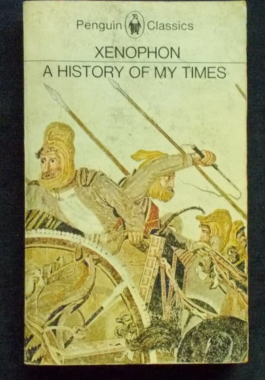
In 404 B.C., the Spartans demolished the famous Long Walls of Athens, signalling the complete victory of the city of Lycurgus and the subordination of all Greece to the Spartan interest. Yet within forty years, the pride of Sparta had been humbled, their glory gone for ever. Xenophon lived through this time; despite being Athenian he was intimate with some of the most influential people in Sparta, including King Agesilaus. Here is the on-the-spot documentation of the last years of the independent cities of Hellas, by someone who saw it all. Translated by Rex Warner. https://cosmiccauldronbooks.com.au/p/imperial-caesar-rex-warner/
-

Lennie Lower was born in Dubbo in 1903 and after school joined the Royal Australian Navy, which he left in circumstances that are somewhat obscure. During the Depression he seems to have led a hobo existence and began contributing humorous material to newspapers, later becoming a full time journalist. In this volume: The Secret Lives Of Lennie L:ower; Bloodhound Lower Of The Yard; Husband Lower Of The Back Yard; Hints For Young Home-muckers; Bearding Grandpa In His Den; Putting Curry Into The Curriculum; How To Be A Lighthouse Keeper Or Almost Anything; Is There An Elf On Your Shelf? Whaling, Chess And Other Indoor Sports; Science, Medicine And Other Lurks. Epilogue:The Melancholy Of Lennie Lower by Alexander MacDonald. Known for Here's Luck, Lower is still considered to be the comic genius of Australian journalism. He died in 1947.
-
 Yambo, a sixtyish rare-book dealer who lives in Milan, has suffered a loss of memory - he can remember the plot of every book he has ever read, every line of poetry, but he no longer knows his own name, doesn't recognize his wife or his daughters, and remembers nothing about his parents or his childhood. In an effort to retrieve his past, he withdraws to the family home somewhere in the hills between Milan and Turin. There, in the sprawling attic, he searches through boxes of old newspapers, comics, records, photo albums, and adolescent diaries. And so Yambo relives the story of his generation: Mussolini, Catholic education and guilt, Josephine Baker, Flash Gordon, Fred Astaire. His memories run wild, and the life racing before his eyes takes the form of a graphic novel. Yambo struggles through the frames to capture one simple, innocent image: that of his first love. Illustrated.
Yambo, a sixtyish rare-book dealer who lives in Milan, has suffered a loss of memory - he can remember the plot of every book he has ever read, every line of poetry, but he no longer knows his own name, doesn't recognize his wife or his daughters, and remembers nothing about his parents or his childhood. In an effort to retrieve his past, he withdraws to the family home somewhere in the hills between Milan and Turin. There, in the sprawling attic, he searches through boxes of old newspapers, comics, records, photo albums, and adolescent diaries. And so Yambo relives the story of his generation: Mussolini, Catholic education and guilt, Josephine Baker, Flash Gordon, Fred Astaire. His memories run wild, and the life racing before his eyes takes the form of a graphic novel. Yambo struggles through the frames to capture one simple, innocent image: that of his first love. Illustrated. -
 This is a screen adaptation of Orwell's Keep The Aspidistra Flying. Comstock's struggle in 1930s England - that's George Comstock, budding poet and suitably angry young man - to write poetry and be a free man means that he must throw up his job as a star copywriter at an illustrious advertising firm to work in a dingy book shop for far less money. It also means that he must sponge off his hard-working sister, girlfriend and wealthier friends, while calling every man 'comrade' and loudly deploring the 'God of Money' - not to mention loudly abhorring that eternal symbol of stodgy respectability, the dreaded aspidistra. George has to descend into the squalid, bed bug-ridden depths of disreputable Lambeth to prove his point, while his patient and ever-practical girlfriend Rosemary stands by and waits for him to come to his senses. With many guest appearances by well-loved English character actors.
This is a screen adaptation of Orwell's Keep The Aspidistra Flying. Comstock's struggle in 1930s England - that's George Comstock, budding poet and suitably angry young man - to write poetry and be a free man means that he must throw up his job as a star copywriter at an illustrious advertising firm to work in a dingy book shop for far less money. It also means that he must sponge off his hard-working sister, girlfriend and wealthier friends, while calling every man 'comrade' and loudly deploring the 'God of Money' - not to mention loudly abhorring that eternal symbol of stodgy respectability, the dreaded aspidistra. George has to descend into the squalid, bed bug-ridden depths of disreputable Lambeth to prove his point, while his patient and ever-practical girlfriend Rosemary stands by and waits for him to come to his senses. With many guest appearances by well-loved English character actors. -
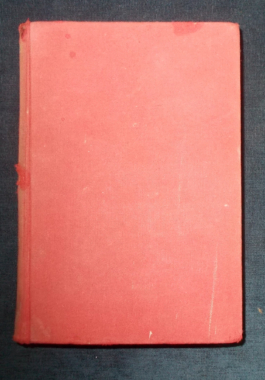
 A real treasure chest of old-fashioned favorite tales; complete and unabridged except for those marked *. The Heroes, Charles Kingsley; Horatius, Lord Macaulay; The History Of The Seven Families of the Lake Pipple-Popple, The Jumblies, The Pobble Who Has No Toes and The Two Old Bachelors (all illustrated), Edward Lear; The Rose And The Ring (illustrated), W.M. Thackery; The Travels of Baron Munchausen* and Greedy Richard, Jane Taylor; The Watchfulness Of Papa, Jane and Anne Taylor; Matilda, Who Told Lies and Franklin Hyde, Who Caroused In The Dirt and Was Corrected By His Uncle (illustrated), Hilaire Belloc; John Gilpin, William Cowper; The Jackdaw Of Rhiems, R.H. Barham; Orpheus and Eurydice, Gilbert Abbot A'Beckett; The Pied Piper of Hamelin, Robert Browning; The Fairies, William Allingham; Goblin Market, Christina Rossetti; The Snow Queen, Hans Andersen; The Brave Little Tailor, Grimm; The Golden Branch, Countess D'Aulnoy; Granny's Wonderful Chair, Frances Browne; A Mid-Summer Night's Dream (slightly adapted), William Shakespeare; Aesop's Fables (Selections); An Elegy On The Glory Of Her Sex, Madam Mary Blaize, Oliver Goldsmith; Old Saws; Wise Sayings; The Story Of the Three Calendars, Sons Of Kings And Of The Five Ladies Of Baghdad, (adapted) from The Arabian Nights; Alice's Adventures in Wonderland, Lewis Carroll; Chink: The Development Of A Pup, Ernest Thompson Seton; Black Beauty, Anna Sewell, The Pavilion On The Links, R.L. Stevenson. CAUTION! These tales would probably be regarded as unsuitable for children today so adults please read first!
A real treasure chest of old-fashioned favorite tales; complete and unabridged except for those marked *. The Heroes, Charles Kingsley; Horatius, Lord Macaulay; The History Of The Seven Families of the Lake Pipple-Popple, The Jumblies, The Pobble Who Has No Toes and The Two Old Bachelors (all illustrated), Edward Lear; The Rose And The Ring (illustrated), W.M. Thackery; The Travels of Baron Munchausen* and Greedy Richard, Jane Taylor; The Watchfulness Of Papa, Jane and Anne Taylor; Matilda, Who Told Lies and Franklin Hyde, Who Caroused In The Dirt and Was Corrected By His Uncle (illustrated), Hilaire Belloc; John Gilpin, William Cowper; The Jackdaw Of Rhiems, R.H. Barham; Orpheus and Eurydice, Gilbert Abbot A'Beckett; The Pied Piper of Hamelin, Robert Browning; The Fairies, William Allingham; Goblin Market, Christina Rossetti; The Snow Queen, Hans Andersen; The Brave Little Tailor, Grimm; The Golden Branch, Countess D'Aulnoy; Granny's Wonderful Chair, Frances Browne; A Mid-Summer Night's Dream (slightly adapted), William Shakespeare; Aesop's Fables (Selections); An Elegy On The Glory Of Her Sex, Madam Mary Blaize, Oliver Goldsmith; Old Saws; Wise Sayings; The Story Of the Three Calendars, Sons Of Kings And Of The Five Ladies Of Baghdad, (adapted) from The Arabian Nights; Alice's Adventures in Wonderland, Lewis Carroll; Chink: The Development Of A Pup, Ernest Thompson Seton; Black Beauty, Anna Sewell, The Pavilion On The Links, R.L. Stevenson. CAUTION! These tales would probably be regarded as unsuitable for children today so adults please read first! -

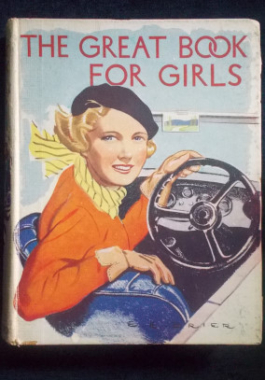 In this volume; The Rest Cure, Anne Page; Caroline And The Count, Jocelyn Oliver; A Bit Of History, D. Dike; The Desert Of Arabia, J.T. Williams; S.O.S., Thura Lifford; The Secret Of The Lobster Pots, Ierne T. Plunket; Cricket For Girls, Marjorie Pollard; The Saving Of The 'Undine', Beryl Irving; The Smugglers Of Portincross, Dorita Fairlie Bruce; It Flowered For Me Alone, Thora Stowell; Gillian's Choice, Pamela Tynan Hinkson; Captain's Roll Of Honour, Beryl C. Lawley; That Sort Of Girl, Peggy Judge. With colour plates and line drawing illustrations.
In this volume; The Rest Cure, Anne Page; Caroline And The Count, Jocelyn Oliver; A Bit Of History, D. Dike; The Desert Of Arabia, J.T. Williams; S.O.S., Thura Lifford; The Secret Of The Lobster Pots, Ierne T. Plunket; Cricket For Girls, Marjorie Pollard; The Saving Of The 'Undine', Beryl Irving; The Smugglers Of Portincross, Dorita Fairlie Bruce; It Flowered For Me Alone, Thora Stowell; Gillian's Choice, Pamela Tynan Hinkson; Captain's Roll Of Honour, Beryl C. Lawley; That Sort Of Girl, Peggy Judge. With colour plates and line drawing illustrations. -
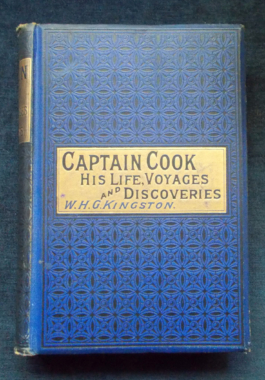 This book is not a series of fictitious adventures of the great Captain Cook, the eighteenth century navigator and explorer, but a straightforward statement of his life and achievements. It can be classed as a biography, although Cook's life can be read as a well-written book of adventures. There's extracts from Cook's logs describing, among other things, life in the South Pacific in the 18th century. An extraordinary narrative of life, trade and discovery, his success at preventative measures for scurvy and his ability to create long lasting respect from islanders, kings and chiefs from Tahiti to Hawaii.
This book is not a series of fictitious adventures of the great Captain Cook, the eighteenth century navigator and explorer, but a straightforward statement of his life and achievements. It can be classed as a biography, although Cook's life can be read as a well-written book of adventures. There's extracts from Cook's logs describing, among other things, life in the South Pacific in the 18th century. An extraordinary narrative of life, trade and discovery, his success at preventative measures for scurvy and his ability to create long lasting respect from islanders, kings and chiefs from Tahiti to Hawaii. -

A story of Viking days. In the middle of the banqueting hall, where Jarl Halfdene stood watching the crowd on the beach, and looking at him in the old man's arms eyes. "In your trust, Jarl Halfdene!" he said at last in solemn tones." "As the death of the band!" As solemnly he replied, "Halfdene!" and looking as earnestly into Birkabegn's face, as he pressed the little child to his breast. The crown of the gilt raven, which was held in readiness, grasped the hilt of his long sword, and hurried out into the gathering darkness. A little while after King Birkabegn was gone Hablok was crying piteously, and all Jarl Halfdene's coaxing and endeavors to console him were useless, but he was wearied out, and before the last ship had pushed off from the beach, he lay sound asleep in Halfdene's arms. The old man still stood watching the dark line on the sea, and the old men were left behind, and two or three nobles and councillors in the care of the kingdom. These nobles were called jarls, and the most trusted and beloved among them at King Birkabegn's court was Jarl Halfdene. Right well he deserved to be so; For King Birkabegn's father, then to Birkabegn himself, he had a trusty right hand, and he was shown as wise as he was honorable and loyal; and the king knew that no harm could ever be his little son while he was in Jarl Halfdene's care.
-
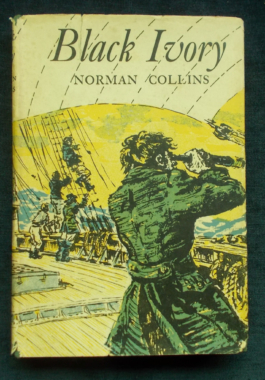
Black Ivory: Norman Collins
$20.00Comparable to Treasure Island or Mutiny on the Bounty, here is a story of high adventure, mutiny and high-jacking told in the first person by a 13 year-old boy who runs away from home to seek a fortune for his family. Ralph Raikes is the son of a farmer who has been evicted from his holding by an unjust landlord. He goes to Liverpool where a gang of scoundrels force him to sign on as a cabin boy under the notorious Captain Swing. He recounts his terrifying, strange experiences on board the Nero, which he discovers to be a slave ship bound for another load of 'black ivory' from Africa. There are many adventures, lessons and triumphs before Ralph goes home. With black and white illustrations. -

The Missing Angel: Erle Cox
$30.00Tydvil Jones is a victim of feminine autocracy; he's no longer young and he awoke to the fact that he'd never had a day's fun in his entire life. Fiercely determined to make up for lost time, he finds an ally in a very Powerful Personage. In three months, he manages more riotous adventure than most men manage in a lifetime and squares his account with his nagging spouse. He complicates the lives of his friends, confounds his enemies and becomes the most wanted by the entire police force. Jones breaks the shackles of convention and emerges triumphant, shameless and unregenerate - but very very happy! In the style of Thorne Smith. -
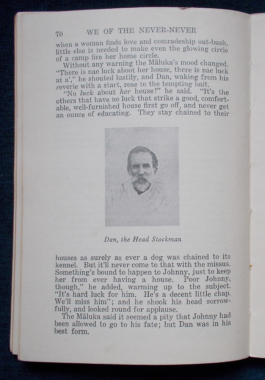
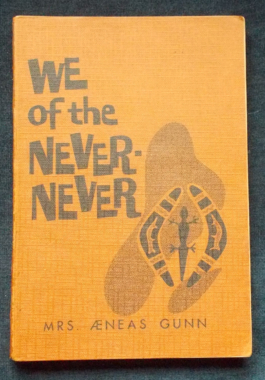 In 1902, newly-married Jeannie Gunn (Mrs Aeneas Gunn) left the security and comfort of her Melbourne home to travel to the depths of the Northern Territory, where her husband had been appointed manager of ‘The Elsey’, a large cattle station. One of the very few white women in the area, she was at first resented by people on and around the station, till her warmth and spirit won their affection and respect. She had an unerring ear and eye for the sounds and sights of the country, and this is her moving and simple account of her life amidst the beauty and cruelty of the land, and the isolation and loneliness - together with the comradeship and kindness of those around her. Abridged and adapted school edition. Angus and Roberson,1962. Photo illustrations.
In 1902, newly-married Jeannie Gunn (Mrs Aeneas Gunn) left the security and comfort of her Melbourne home to travel to the depths of the Northern Territory, where her husband had been appointed manager of ‘The Elsey’, a large cattle station. One of the very few white women in the area, she was at first resented by people on and around the station, till her warmth and spirit won their affection and respect. She had an unerring ear and eye for the sounds and sights of the country, and this is her moving and simple account of her life amidst the beauty and cruelty of the land, and the isolation and loneliness - together with the comradeship and kindness of those around her. Abridged and adapted school edition. Angus and Roberson,1962. Photo illustrations. -

 The narrative of a voyage around the world in a Windjammer in 1919. This is a vintage glimpse into the sea-faring lifestyle of times past with an authentic account of a life lived at sea; a true and spirited account of a phase of sea-life now long past, fascinating from the very vividness and sincerity of its telling. Retold with the lucidity and fondness that can only belong to one who has lived it and loved it, A Gipsy of the Horn - Life in a Deep-Sea Sailing Ship is highly recommended for readers with an interest in the history and development of sailing. With beautiful pen and ink drawings by N.A.D. Wallis.
The narrative of a voyage around the world in a Windjammer in 1919. This is a vintage glimpse into the sea-faring lifestyle of times past with an authentic account of a life lived at sea; a true and spirited account of a phase of sea-life now long past, fascinating from the very vividness and sincerity of its telling. Retold with the lucidity and fondness that can only belong to one who has lived it and loved it, A Gipsy of the Horn - Life in a Deep-Sea Sailing Ship is highly recommended for readers with an interest in the history and development of sailing. With beautiful pen and ink drawings by N.A.D. Wallis. -


Good Intentions: Ogden Nash
$15.00Nash can't resist a good sly poke at society, pretensions, the battle of the sexes and so much more in this outing of verses, including the Axis powers of World War II - and how not to annoy them! Some of the verse titles...Now Tell Me About Yourself; Pay To The Collector of Internal Revenue; I'll Stay out Of Your Diet If You'll Stay Out Of Mine; I'll Write Their Number Down When We Get Home... From Drive Slow, Man Chortling...Gangway, everybody hold your hats,
Curb your dogs and leash your cats,
Embrace your young in parental clasp,
Breathe in deep and prepare to gasp!
Feel your pulse go rapid and joggly,
Open your eyes and goggle agogly,
Hitch your wonderment to a star -
Here comes me in a brand new car!
-

Mother: Judy Olausen
$20.00With quirky, offbeat and vibrant imagery, Judy Olausen explodes the mother myth, exposing the too-often ignored reality of the Eisenhower-era homemaker. Mother offers a very funny, wickedly satiric collection of portraits of that most sacred institution: Mom - eager to please, ready to serve and blissfully sweeping the unmentionable under the rug. Outlandish yet surprisingly meaningful, Olausen turns the lifetime homemaker into a surreal icon of domestic submission. Photographing her own mother using 1950s-inspired props, Olausen presents tongue-in-cheek images of Mother As Coffee Table, Mother As Door Mat and Mother in Camouflage. -
 At twenty-nine, Bettger was a failed insurance salesman. By the time he was forty he owned a country estate and could have retired. What are the selling secrets that turned Bettger’s life around from defeat to unparalleled success and fame as one of the highest paid salesmen in America? Here he reveals his personal experiences and explains the foolproof principles that he developed and perfected. He shares instructive anecdotes and step-by-step guidelines on how to develop the style, spirit, and presence of a winning salesperson. He covers: the power of enthusiasm; how to conquer fear; the key word for turning a skeptical client into an enthusiastic buyer; the quickest way to win confidence; the seven golden rules for closing a sale. This was first published in 1951 and the times have changed - but people don't. There is plenty that is still applicable today.
At twenty-nine, Bettger was a failed insurance salesman. By the time he was forty he owned a country estate and could have retired. What are the selling secrets that turned Bettger’s life around from defeat to unparalleled success and fame as one of the highest paid salesmen in America? Here he reveals his personal experiences and explains the foolproof principles that he developed and perfected. He shares instructive anecdotes and step-by-step guidelines on how to develop the style, spirit, and presence of a winning salesperson. He covers: the power of enthusiasm; how to conquer fear; the key word for turning a skeptical client into an enthusiastic buyer; the quickest way to win confidence; the seven golden rules for closing a sale. This was first published in 1951 and the times have changed - but people don't. There is plenty that is still applicable today.


